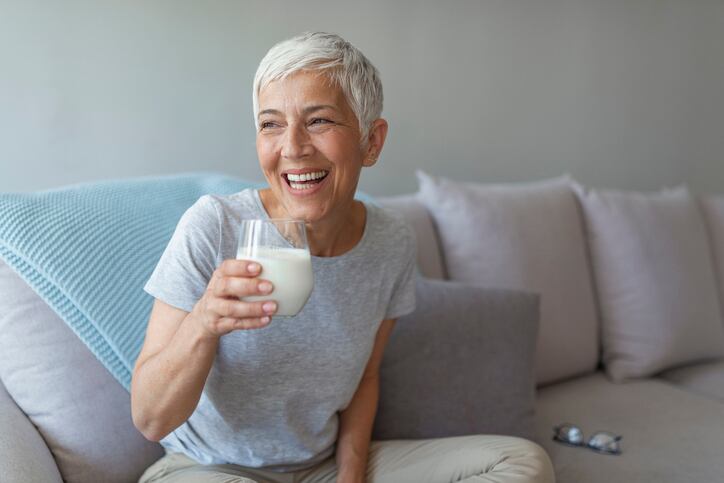Vitamin D insufficiency is a global health problem, linked with multiple health issues, including the immune response to COVID-19. Estimates show that as much as 40% of the European population could be suffering from vitamin D deficiencies, with 13% potentially suffering from severe vitamin D deficiency. Vitamin D deficiency is linked to rickets in children and bone pain and muscle weakness in adults. Vitamin D supplements are therefore vital – and knowing whether they will be absorbed and how best to aid absorption is crucial.
Fortification might also be the solution, but knowledge is sparse on whether fortification of various food items affects the bioavailability differently.
It is generally assumed that ingesting vitamin D with a fatty meal improves the bioavailability of vitamin D. Furthermore, complex formation with whey protein isolate may enhance the stability of vitamin D and thereby improve bioavailability.
To answer this question, Danish researchers studied the efficiency of fortifying different food items with vitamin D3.
Dr. Rasmus Espersen of Aarhus University in Denmark and his colleagues conducted a randomised trial on 30 postmenopausal women aged 60-80 with vitamin D deficiency. The study, presented at the 24th European Congress of Endocrinology in Milan, aimed to measure immediate changes in blood concentrations in response to the consumption of various food items containing 200 g D3. In a random order, 500 mL of water, milk, juice, juice with vitamin D bound to whey protein isolate as well as 500 mL of water without vitamin D (placebo) were presented to the study participants.
“One aspect that surprised me was the fact that the results seen in the water and milk groups were equal. This was quite unexpected given the fact that milk contains more fat than water.” stated Dr. Espersen.
The study revealed that whey protein isolate in apple juice did not enhance maximum concentration of D3 compared to juice without it. However, compared to juice, D3 concentrations were significantly higher in response to intake of milk and water. No difference was observed between milk and water. Therefore, the conclusion from this study is that vitamin D fortification works better in water or milk than in juice.
Supplements vs fortified food and drinks: how to address low vitamin D intakes
The study comes as governments and business consider the best ways to address Vitamin D insufficiency.
Vitamin D3 supplementation is a cost-effective way of reducing deficiency in later life and particularly among the most ‘at-risk’ 70-plus age group, according to Irish researchers.
Comparative estimates of cost and quality-adjusted life year in three adult groups revealed that vitamin D3 supplementation was most beneficial for the over-70s, reducing their risk of mortality, while also being cost-effective, the authors wrote in BMJ Nutrition, Prevention & Health.
Their analysis determined that vitamin D treatment for ‘at risk’ adults that suffer year-round deficiencies, could potentially reduce annual healthcare costs from a total of approximately £7.2m (€8.4m) to approximately £4.8m (€5.6m).
In addition, clinical data suggests supplementation may decrease all-cause mortality by 7% (with 4.2% attributable to reduced cancer mortality) and reduce hip fractures by 16% (and related excess mortality) and non-hip/ less severe fractures by around 20%.
The UK government also recently launched a new review to promote the importance of vitamin D and identify ways to improve intake across the population, including through dietary supplements and fortified food and drink.
Around 1 in 6 adults and almost 20% of children in the UK have vitamin D levels lower than government recommendations. Older people, the housebound and people from Black and South Asian communities are more likely to have lower levels of the vital vitamin.
In the UK, people obtain the majority of vitamin D from sunlight on their skin during the spring and summer, as dietary sources of vitamin D are limited.
Current advice is for all adults and children to consider taking a daily 10 micrograms supplement of vitamin D between October and March. Some at-risk groups are advised to consider taking a supplement throughout the year. However, uptake is low with only 1 in 6 adults reporting taking a daily supplement.
The call for evidence, launched by the Office for Health Improvement and Disparities, aims to kickstart a national campaign to raise awareness of the importance of vitamin D and gather views from the public, public health experts, retailers, food manufacturers and other industry bodies on ambitious ways to improve uptake and tackle disparities.
Health and Social Care Secretary, Sajid Javid, said: “We must break the link between background and prospects for a healthy life, and I am determined to level up the health of the nation and tackle disparities.
“People from Black and Asian communities, older people and people who have limited access to the outdoors are more likely to have lower levels of vitamin D, which is essential for bone and muscle health and improving years of life lived in good health.
“I have launched this call for evidence to identify innovative ways we can encourage people to increase their vitamin D intake and help people live longer, healthier and happier lives.”
Reference
What is the most efficient way to fortify food items with vitamin D? A randomised, multiple crossover study
Rasmus Espersen, Lene Ring Madsen, Caroline Nebel, Marianne Danielsen, Trine Dalsgaard, Lars Rejnmark
Aarhus University, Department of Clinical Medicine, Denmark; Aarhus University Hospital, Department of Endocrinology and Internal Medicine, Aarhus, Denmark; Regional Hospital West Jutland, Department of Internal Medicine, Herning, Denmark; Steno Diabetes Center Aarhus, Aarhus, Denmark; Danish Diabetes Academy, Odense, Denmark; Aarhus University, Department of Food Science, Aarhus, Denmark; Aarhus University, iFood, Centre for Innovative Food Research, Aarhus, Denmark


